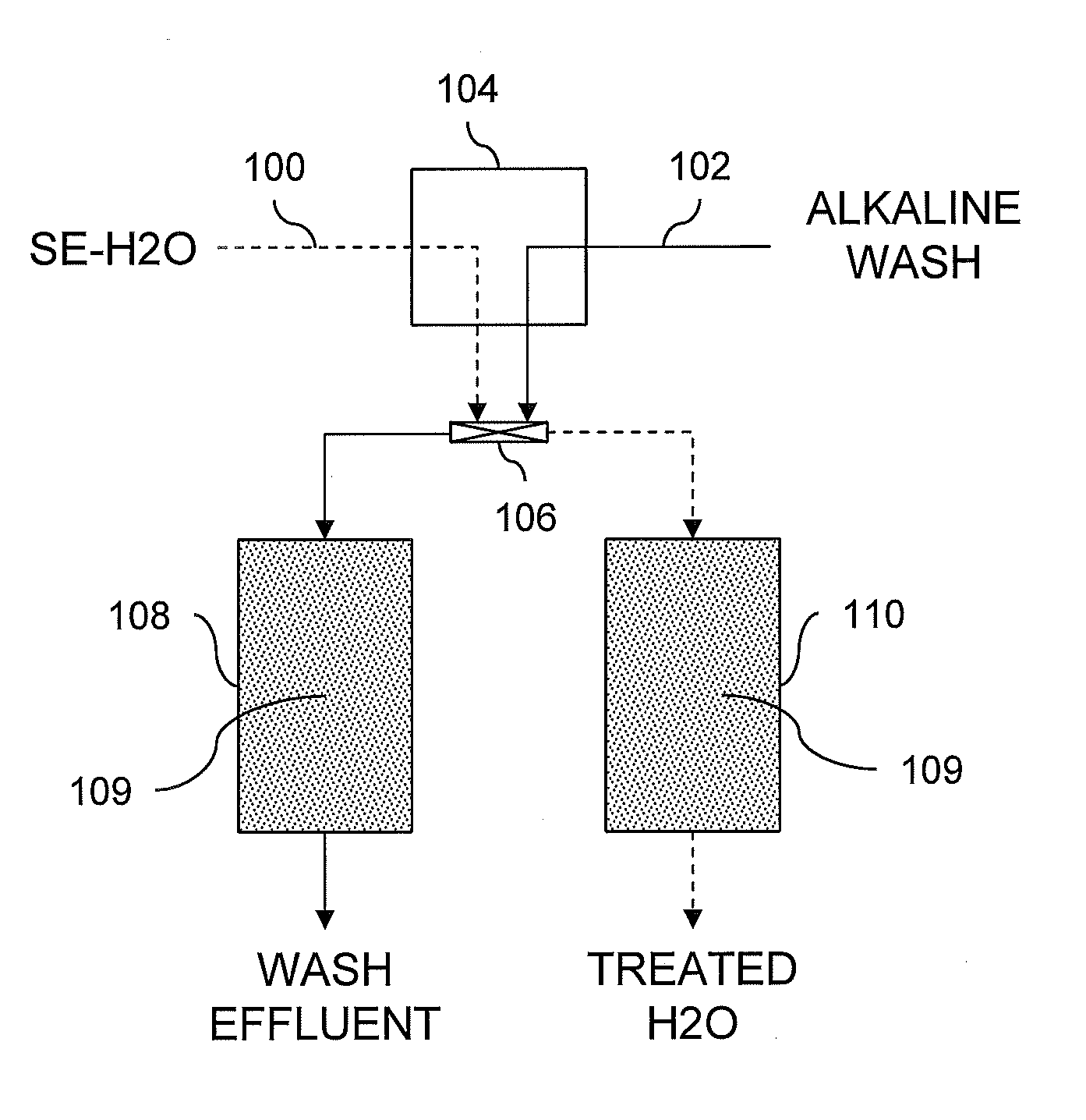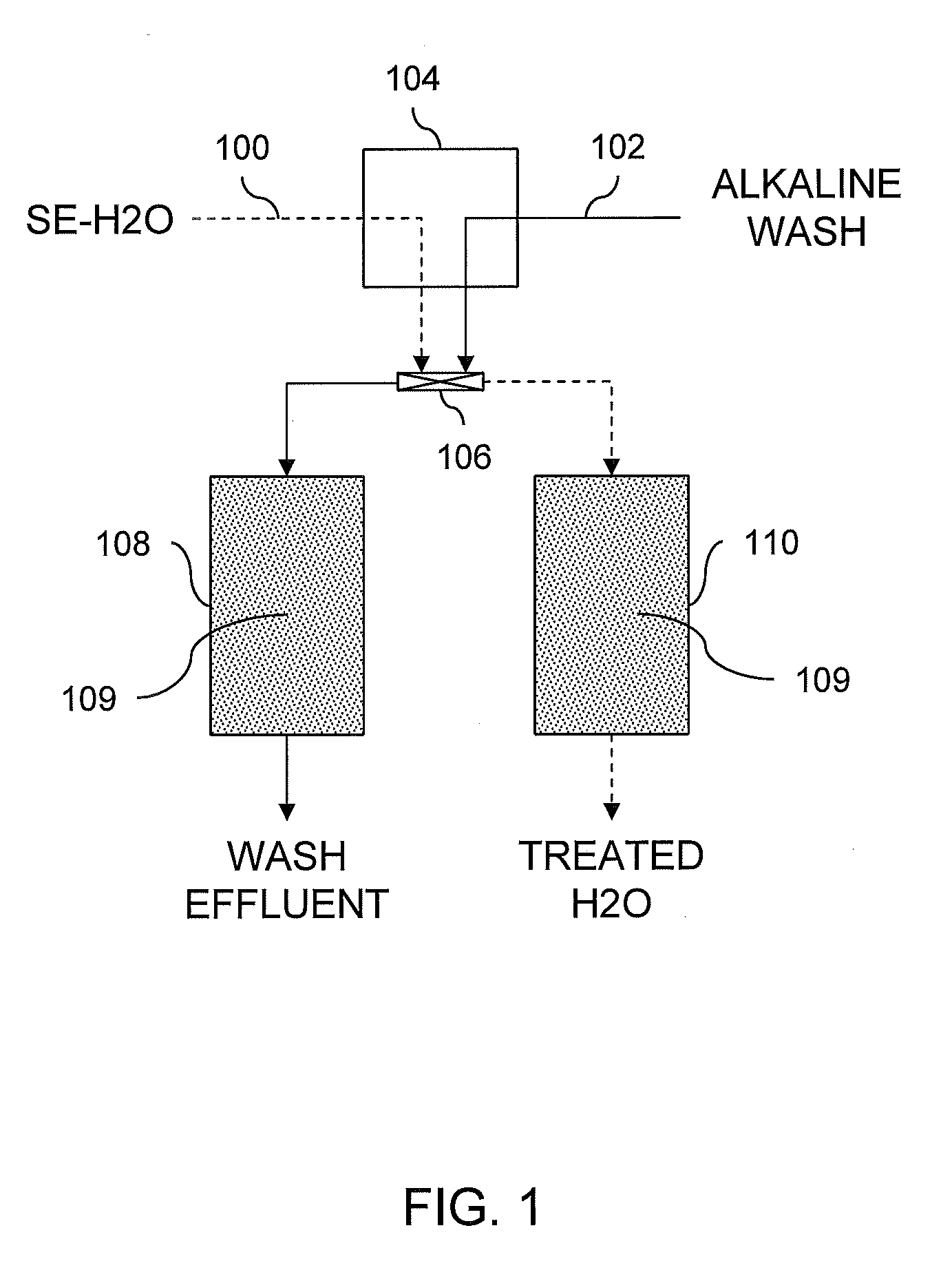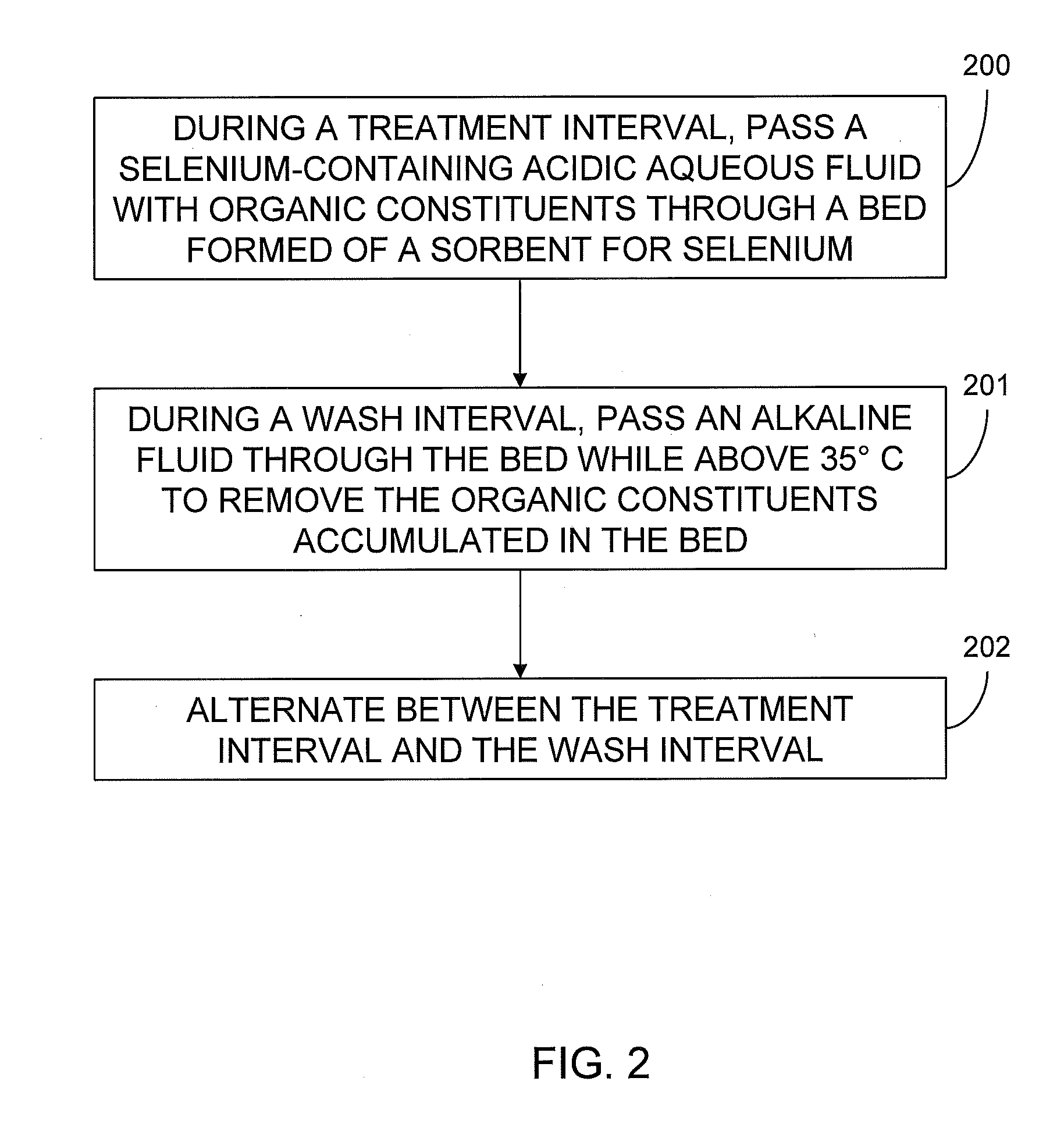Operations of selenium removal sorbent beds
a technology of sorbent beds and selenium, which is applied in the field of selenium removal to achieve the effect of facilitating the dissolution and removal of organic compounds and facilitating the removal of selenium
- Summary
- Abstract
- Description
- Claims
- Application Information
AI Technical Summary
Benefits of technology
Problems solved by technology
Method used
Image
Examples
example
[0025]Four selenium removal beds with sorbent made of sulfur impregnated activated carbon were used in a selenium removal process. The beds were fed with an influent of test water containing selenium and phenolic compounds. Sulfuric acid added to the test water adjusted pH of the test water to 2.5 prior to being fed through the beds. In addition, the test water was heated in order to contact the sorbent between 71° C. and 77° C. Flow rate of the test water was controlled at 1.5 liters per minute (LPM). Input pressure for the test water fluctuated between 138 kilopascal (kPa) and 207 kPa. A backpressure from the beds increased with time and was sufficient within five days to prevent maintaining the 1.5 LPM flow rate with the input pressure.
[0026]The feed of the test water to the beds was then stopped and substituted for flush water. The flush water fed to the beds at a flow rate of 2.8 LPM for a time period of 24 hours was at a pH of 7.5 to 8.5 and was heated to 82° C. After the 24 h...
PUM
| Property | Measurement | Unit |
|---|---|---|
| Temperature | aaaaa | aaaaa |
| Temperature | aaaaa | aaaaa |
| Temperature | aaaaa | aaaaa |
Abstract
Description
Claims
Application Information
 Login to View More
Login to View More - R&D
- Intellectual Property
- Life Sciences
- Materials
- Tech Scout
- Unparalleled Data Quality
- Higher Quality Content
- 60% Fewer Hallucinations
Browse by: Latest US Patents, China's latest patents, Technical Efficacy Thesaurus, Application Domain, Technology Topic, Popular Technical Reports.
© 2025 PatSnap. All rights reserved.Legal|Privacy policy|Modern Slavery Act Transparency Statement|Sitemap|About US| Contact US: help@patsnap.com



